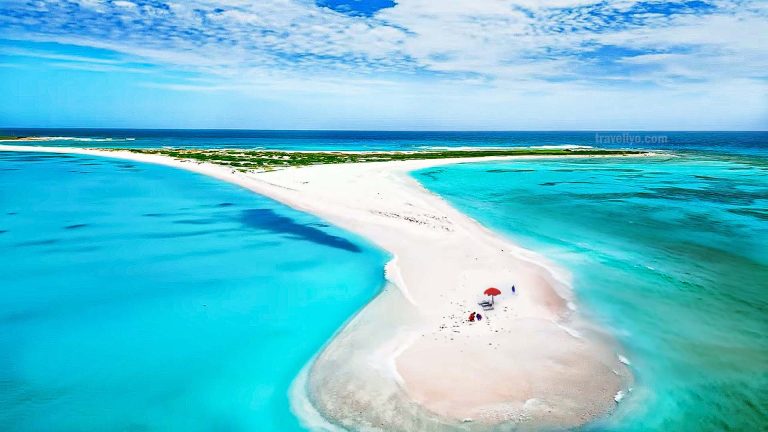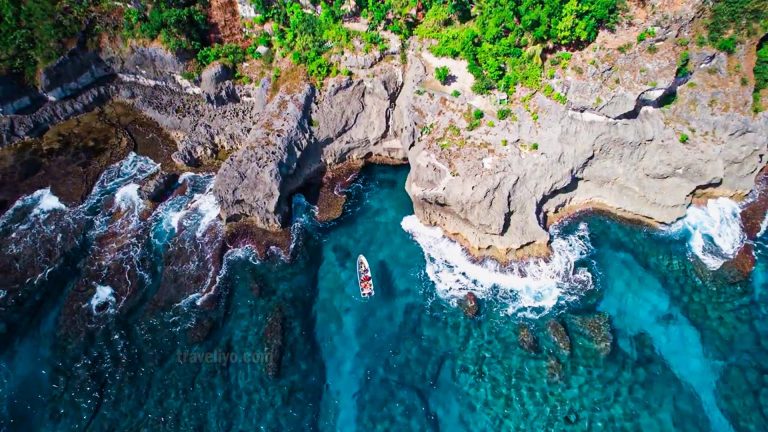Blue City Morocco: My Top 10 Reasons to Visit Chefchaouen
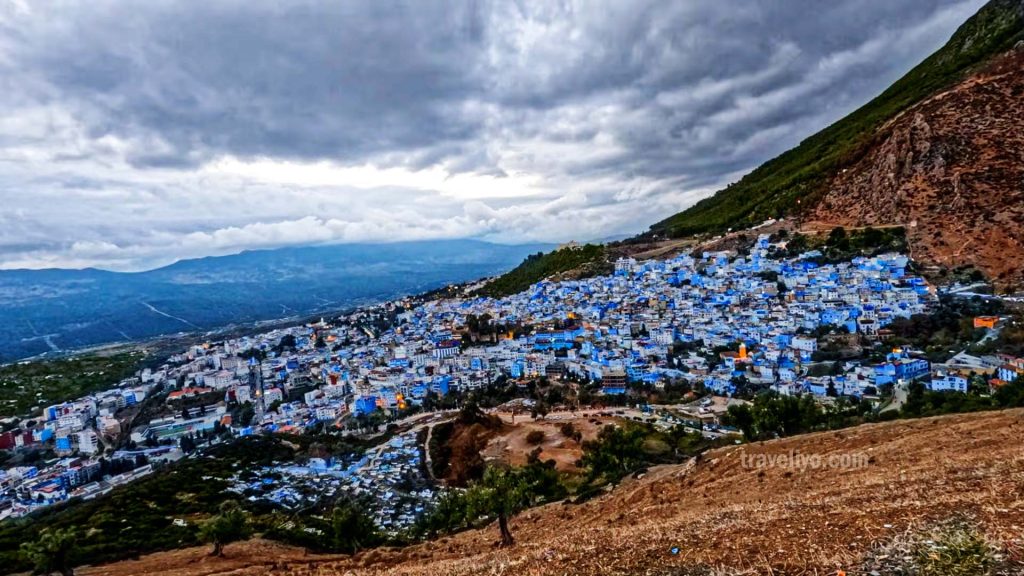
When I first arrived in Chefchaouen, the famous “Blue City Morocco”, I felt as though I had stepped into a dream painted in every shade of azure. The winding alleys of its medina glowed under the warm Rif Mountains sun, buildings draped in cobalt and cerulean, the hue rebounding in the reflecting light like ripples on water. The scent of fresh mint tea wafted from rooftop cafés; the faint murmur of the call to prayer echoed across quiet stone steps. I inhaled deeply—it was a mix of pine from the surrounding hills, the crisp mountain air, and somewhere underneath, the faint tang of paint and wood, of centuries of tradition. Our trip to the Blue City in Morocco was everything I had hoped for, and more.
My journey began at the town gate, the archway marking entry from the less-blue edges into the heart of the city. I lugged my backpack up a short incline and stopped for a moment outside the gate, turning around to take in the cascade of soft blue walls climbing the slope of the mountain. Children played near a fountain, their laughter bouncing off the painted surfaces. I remember thinking: “This is not just a place I’m visiting—but a mood I’ve walked into.”
Inside the medina, the cobbled lanes were narrower than I expected. Each corner revealed a new shade of blue: sky blue, deep indigo, turquoise, even periwinkle in shadows. People sat on low stools outside blue-washed houses, sipping glasses of atay nana (Moroccan mint tea) as the afternoon light softened. The sound of water trickling from a tiny fountain at a public wash station mixed with the soft hum of conversation in Arabic and Amazigh dialects. At one point, I sat for five minutes on a step simply watching a local artisan painting a door — steady strokes of blue over white-washed wood — an act done like breathing, like the town inhales and exhales blue.
As dusk approached, the city changed. Lanterns came alive, the alleys glowed warmer, and the deep blue walls took on violet shadows. I climbed to a rooftop café with a view over the medina and mountains, my mint tea growing cold as I watched the sun dip behind the Rif peaks. The cooling air carried faint sounds of a muezzin calling from a distant minaret, the blue fading into night like a palette being gently erased. In that moment, I knew that this trip wasn’t just about visiting Chefchaouen Morocco — it was about letting a place seep into you, layer by layer, colour by colour. And I knew I would carry the soft echo of those blue alleys with me long after I left.
02 🏔️ Blue City Morocco: Destination Overview
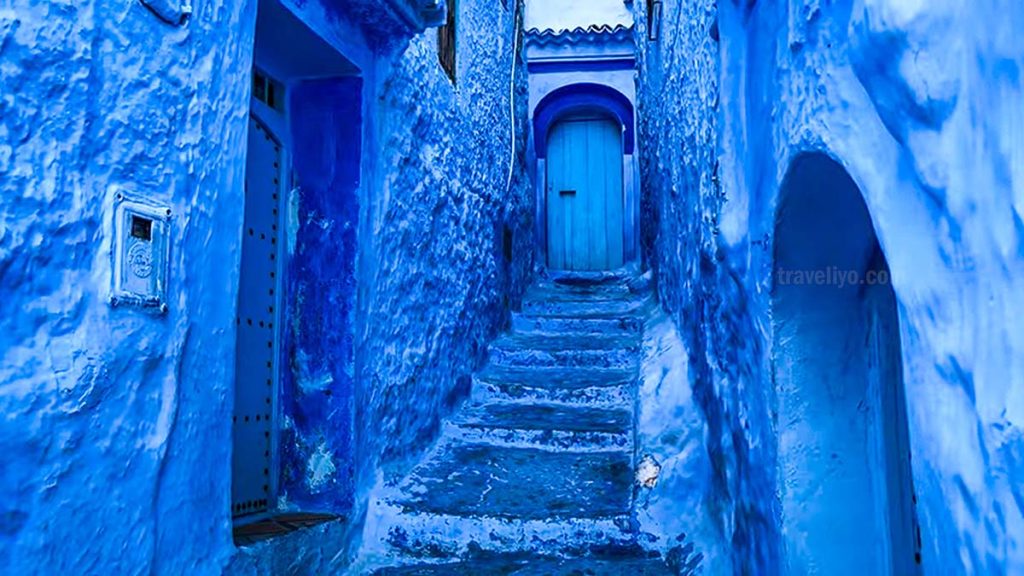
Nestled deep in the heart of the northern Moroccan mountains, Chefchaouen (often called the “Blue City Morocco” හෝ “Blue City in Morocco”) is an exceptional travel destination that blends dramatic geography, layered history, and unmistakable visual identity.
Founded in 1471 by Moulay Ali ibn Rashid al‑Alami, the town originally functioned as a fortress settlement built to guard the mountain passes of the Rif Mountains against Portuguese incursions. The name Chefchaouen itself comes from the Berber phrase meaning “look at the horns” — a reference to the twin peaks that tower above the town.
What makes Chefchaouen Morocco unique is both its location and the way it has preserved its character. Sitting at an altitude of roughly 564 metres, and surrounded by lush forested slopes, the city offers a calm contrast to Morocco’s busier imperial centres like Marrakech or Fes. Over centuries the town remained relatively isolated — for much of its early history, non-Muslims were barred from entering, and the flows of trade and outside influence were limited. This relative seclusion helped preserve traditional Berber and Andalusian-influenced architecture, narrow winding alleys, and a medina that feels untouched by modern mass tourism.
The most instantly striking feature of Chefchaouen is its palette — every wall, door, stairway, and arch in parts of the old medina is painted in varying shades of blue and white. The phenomenon has inspired debate and delight: one popular explanation is that Jewish refugees in the 1930s painted the town blue to symbolise the sky and heaven. Another more practical account is that the cool blue colour helped repel mosquitoes or reflect harsh sunlight, making the streets more comfortable. Regardless of the exact origin, you simply can’t ignore it — the “Blue City Morocco” label is no exaggeration.
Beyond the colour, the medina of Chefchaouen offers architectural gold: the 15th-century Kasbah fortress at its heart, the historic Grand Mosque with its distinctive octagonal minaret, stone-arched gateways, and ancient public fountains surrounded by mint tea-sipping locals. The surrounding mountains branch out into valleys, waterfalls, and hiking trails (such as toward Akchour and the Talassemtane National Park), adding a nature-lover’s backdrop to what might at first appear a purely picturesque town.
In short: Chefchaouen is more than “just another Moroccan medina.” Its fortress origins, secluded location, layered Berber-Andalusian heritage, and signature cobalt-washed alleys give it a character all its own.
03 🗺️ Why I Chose to Visit Chefchaouen
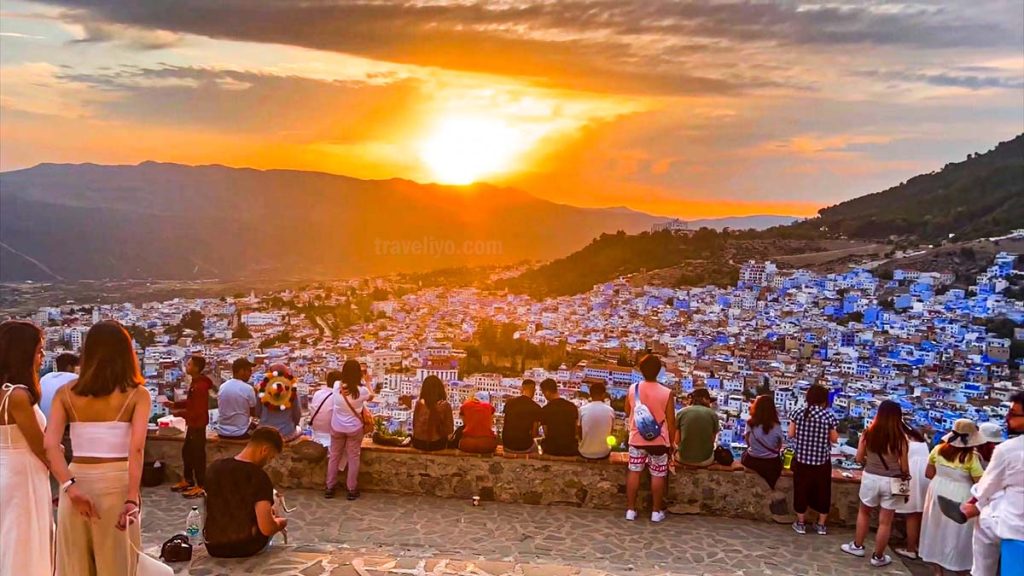
As the seasoned traveller and planner of our adventures, Tania (my wife and partner in crime) and I have explored countless destinations. But when I first glimpsed photographs of the legendary “Blue City Morocco”, I felt a pull I simply couldn’t ignore.
I chose to visit Chefchaouen because after years of navigating landmark cities—Paris at dawn, Tokyo by night, New York in winter—I craved something quieter, more ethereal, and distinctly untouched. The idea of strolling through narrow alleys washed in cobalt and turquoise, high in the Rif Mountains, was irresistible.
You’ll probably feel the same if you’re reading this: maybe you’ve wandered through bustling souks in Marrakech, or perhaps the city’s frantic pace left you longing for calm. Maybe you’re like me, craving a place where colour isn’t just decoration, but identity. Why visit Chefchaouen? Because the shades of blue whisper: “Slow down. Breathe. Be present.” And yes, the main keyword “Blue City Morocco” runs naturally through my excitement.
Another very personal reason: I was drawn to a place where the hustle of the tourist trail seemed softened, where I could remember what it was like to explore without a rigid agenda. Chefchaouen offered that sanctuary. Also, the fact that the city is off the beaten path for many travellers meant Tania and I could experience it more like insiders than mere tourists—locals sipping mint tea, goats crossing the cobblestones, blue doorways waiting for a story. These reasons made me pack my bags, book the taxi from Tangier, and whisper to Tania: “Let’s go see the Blue City in Morocco.”
There’s something deeply relatable in that longing for somewhere real and restorative—so if you’re reading this, you’ll probably want to visit Chefchaouen for the very same reasons I did.
04 🎒 My Favorite Things to Do in Chefchaouen (The “Blue City Morocco”)
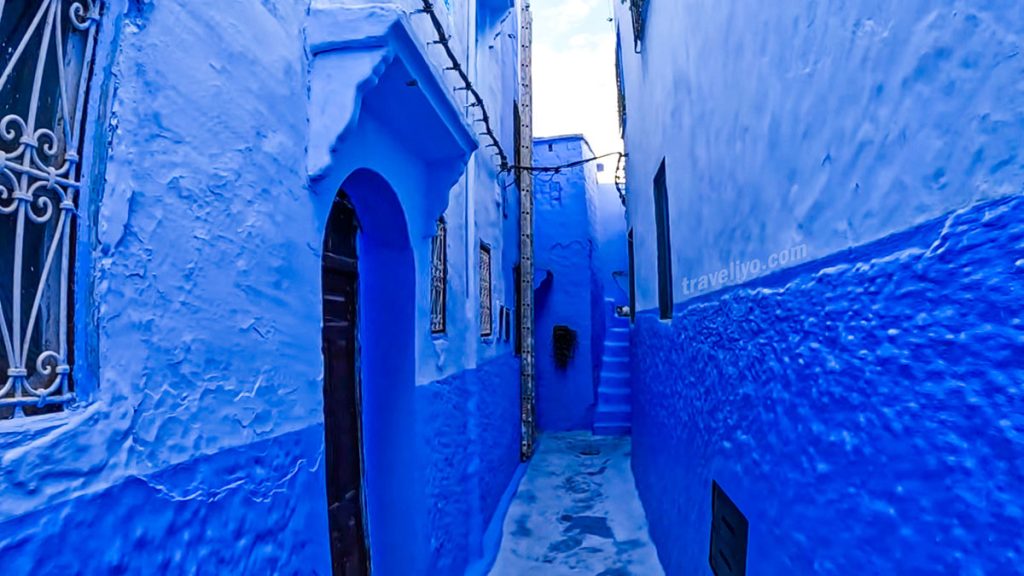
When Tania and I wandered into this magical north-Moroccan town, we discovered so many experiences that truly made our senses come alive. Beyond the sheer beauty of the painted walls, there are specific activities that define a trip to this region. Below are my top picks of What to do in Chefchaouen, with practical details and the usual human side of travel that my wife and I always seem to encounter.
4.1 Wandering the Blue Medina
From the moment we stepped into the old medina, the famous walls of the “Blue City Morocco” surrounded us. These blue-washed alleyways weren’t just visually stunning—they felt like stepping into a vast, open-air art installation. I remember carrying my backpack (just a modest daypack, but still) and realizing: the cobblestones incline, the alleys narrow, and suddenly I had to duck under a low-hung balcony painted indigo. I muttered to Tania, “Watch the door, you’re about to bonk your head,” and sure enough, I banged my shoulder. (Tania, naturally, laughed and said: “Maybe this city was designed for shorter tourists!”)
We paused at a little stairway known for photos (the famed “Derb El Assri” spot). Morning light filtered through and the steps glimmered. We made the rookie mistake of thinking “we’ll come back in the afternoon”—big mistake. By then the Instagram crowds had arrived and the tranquil vibe had shifted. Tip for what to do in Chefchaouen: Go early, fresh sneakers recommended, and give yourself time to just sit and observe—locals chatting over mint tea, cats prowling the blue alleys, men repairing leather shoes in doorways. This aimless wandering is perhaps the purest way to absorb Chefchaouen’s mood.
4.2 Hike to the Spanish Mosque & Sunset View
A little outside the medina, a short but rewarding uphill trail led us to the viewpoint near the old Spanish Mosque ruins. The climb was harder than I expected—my legs protested, but Tania’s inherent precision and determination kicked in, making her say, “Let’s go up carefully, Lakshitha.” At one point, I turned back because my shoe’s sole was peeling (yes, I’d skipped proper footwear) and Tania helped me stick some tape from her travel-kit. We reached the summit just as the sun was dipping behind the Rif Mountains. The blue roofs stretched below us, a sea of azure tinged with gold.
I whispered to Tania: “Walking up to the viewpoint was tough, but the view was worth every step.” And it truly was. The calm hush, the soft breeze, the blue paint seeming to intensify in the golden hour—magic. Practical note: wear good shoes, bring water, go around 1–2 hours before sunset to secure a good spot. This is a must-include on your list of What to do in Chefchaouen.
4.3 Visit Ras El Maa Waterfall & Local Life
Downhill from the medina, we found the Ras El Maa waterfall and stream where locals wash clothes, kids splash, and fresh orange-juice stands line the path. I spotted Tania sipping a glass of bright orange juice and we joked about making that our daily ritual. Then I slipped on a wet rock (again, rookie error), tumbled sideways, and landed facing a blue-painted door with Tania’s concerned laugh nearby—“Are you okay, or did the blue swallow you?” she teased.
This place is both calm and alive: you can sit under a tree, hear the water, watch women doing laundry, and smell fresh herbs drying in the sun. If I could do it again, I’d go earlier before the lunch crowds. This spot is a great mini-break from the painted alleys of the Blue City Morocco.
4.4 Explore Artisan Crafts & Medina Shopping
One of our favorite afternoons: getting deliberately lost among the souvenir shops in the medina, bargaining for wool blankets, leather bags, and little blue-ceramic pots. Tania found a beautiful hand-woven blanket that the vendor claimed “comes from the mountains of the Rif.” I tried negotiating politely, but accidentally nodded “yes” too soon, and ended up buying a small rug I didn’t actually intend to. (Tania’s grin: “Classic Lakshitha move. Good thing it’s blue.”)
Shopping Tip: The market is more relaxed than big Moroccan markets; vendors aren’t overly pushy, but still haggle kindly. If you are looking for unique souvenirs from the Blue City Morocco, this is definitely a key item on your list of What to do in Chefchaouen.
4.5 Coffee, Mint Tea & Roof-top Moments
In the heart of town around Plaza Uta el-Hammam, Tania and I found a rooftop café overlooking blue rooftops and mountain ridges. We ordered mint tea; Tania insisted on demonstrating the proper Spanish-style posture (“La taza first, then sip”). I leaned back, closed my eyes, and let the breeze carry the sound of distant prayer calls off the minaret of the Grand Mosque. It felt like a moment out of time.
There was a small mistake too: I ordered tagine and forgot to specify vegetarian; ended up with a chicken version—oops! Tania laughed, “Next time, you check the menu first, Lakshitha.” But it was delicious. Practical tip: head to a rooftop just before sunset, take time, and soak in the view—avoid rushing.
4.6 Short Day-Trip to the Rif Mountains or Talassemtane National Park
One morning we rented a small taxi to the surrounding mountains and trails (the region around Talassemtane National Park) for a change of pace. Crisp mountain air, green fir forests, sweeping views—it reminded us that the “Blue City in Morocco” is surrounded by wild nature. Note: I underestimated the temperature drop in the shade and borrowed Tania’s jacket—again.
If you have more than 1-2 nights, allocate a half-day for this nature adventure: swimming holes, hiking trails, waterfalls. It’s a beautiful contrast to the medina and a great answer to the question: What to do in Chefchaouen if you need a break from blue.
4.7 Funny Moments & Travel-Mistakes (Because Travel is Real)
Me: forgetting to bring a plug adapter and borrowing Tania’s mid-night while the room lights flickered.
Tania and I turned down narrow stairs too fast; I nearly knocked over a stack of blue ceramic bowls in a shop—the shopkeeper gently raised an eyebrow, I apologized in German, “Entschuldigung!”
I kept expecting “blue city” to mean “blue sky only,” but when a rain shower hit the narrow alleys we dashed into a café—turned out to be one of the most memorable times: the droplets on blue walls shimmering, café lanterns glowing, locals still sipping tea calmly.
These small human moments made our trip richer. Because for Tania and me, travel isn’t just ticking boxes—it’s living the unexpected within the beautiful frame of the Blue City Morocco.
05 🚌 How to get to Chefchaouen
Getting to Chefchaouen was its own little adventure — one that tested both my patience and curiosity. We started our journey from Tangier, about 115 kilometers away, and decided to take the local CTM bus instead of hiring a private car. It took roughly 2.5 hours, winding through endless green mountains and sharp bends that made me feel like we were riding through a painting.
Halfway through, the bus made a short stop in a small village — the kind of place where old men sip mint tea while watching the world go by. I remember Tania laughing at me because I almost bought five packets of random Moroccan snacks just because the seller smiled!
If I had known earlier, I probably would’ve taken a shared taxi from Tangier instead — they’re faster and only slightly more expensive. The road is curvy but safe, and the views are breathtaking. Watching the landscape change from coastal plains to rugged hills felt like traveling between worlds. For anyone planning the trip and asking “How to get to Chefchaouen”: bring motion-sickness tablets if you’re not a fan of winding mountain roads, keep your camera ready, and try to arrive in the Blue City Morocco before sunset — seeing the Blue Pearl glow in the fading light is pure magic
06 🗓️ Best Time to Visit – From My Experience
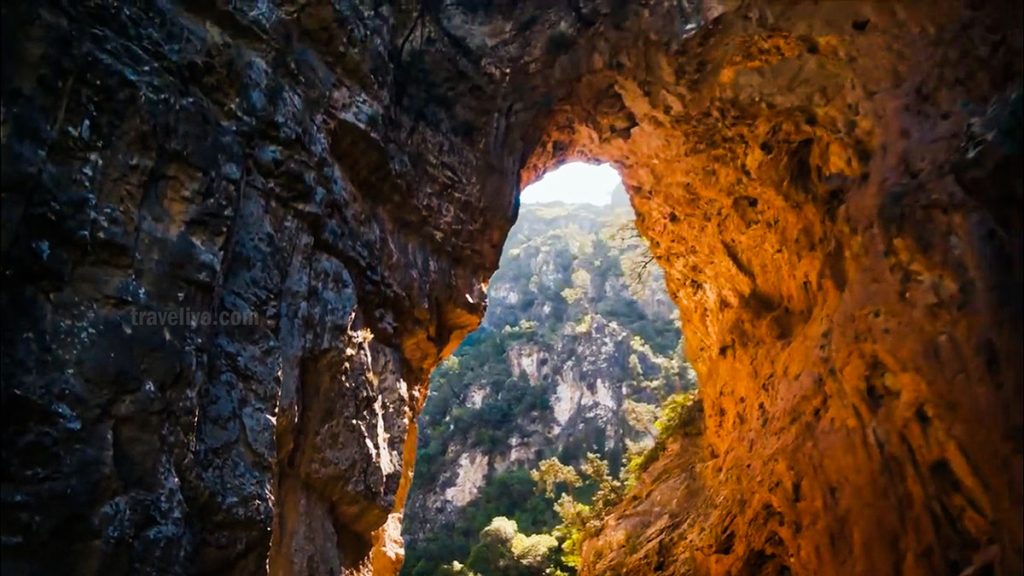
Tania and I visited Chefchaouen Morocco in early spring (April), and honestly, it was perfect. The air was crisp but not cold, the sky clear, and the blue walls glowed softly under the gentle Moroccan sun. The narrow alleys were lively but not overcrowded — just enough tourists to make it social, but not chaotic.
Summer, on the other hand, can be very hot, with temperatures climbing above 35^\circ \text{C} (95^\circ \text{F}). The colors look more vivid under the blazing sun, but walking those steep blue streets becomes quite a workout!
If you love photography and quiet moments, spring and autumn are the golden times. Winter can be chilly and misty, but the fog wrapping around the Rif Mountains adds a mystical charm — especially if you enjoy that cozy, peaceful vibe.
If I ever return (and I know we will), I’d love to see the Blue City in Morocco in late October — fewer tourists, cooler air, and that romantic golden light we both love for our evening walks.
07 🏡 Where I Stayed (Accommodation Review)
We stayed at a cozy little riad called Casa Perleta, tucked away in one of Chefchaouen’s calm blue alleyways. From the moment we stepped inside, it felt like a home rather than a hotel — warm lighting, colorful mosaics, and that sweet scent of mint tea greeting us at the door. The owner, Fatima, welcomed us with the friendliest smile and said, “You are home now.” And honestly, that’s exactly how it felt.
Our room was small but charming — whitewashed walls, carved wooden furniture, and a rooftop view that took my breath away every morning. Tania, you remember that first sunrise we watched together, right? The whole town was glowing in 50 shades of blue. I could’ve stayed there forever.
Pros: Exceptional hospitality — staff truly care; amazing breakfast; rooftop terrace with stunning mountain views.
Cons: Wi-Fi was a bit slow (especially on the rooftop); the walls were thin — one night we could hear a couple next door arguing about who forgot the sunscreen!
If Casa Perleta is full, try Dar Echchaouen — slightly more luxurious, with a pool overlooking the medina. For budget travelers, Hotel Souika is great for backpackers who want social vibes and easy access to everything.
(Affiliate note: You can find great deals for Chefchaouen hotels on Booking.com — just filter by “Rif Mountains view” for the best ones in the Blue City Morocco.)
08 🍽️ Food & Drink I Tried
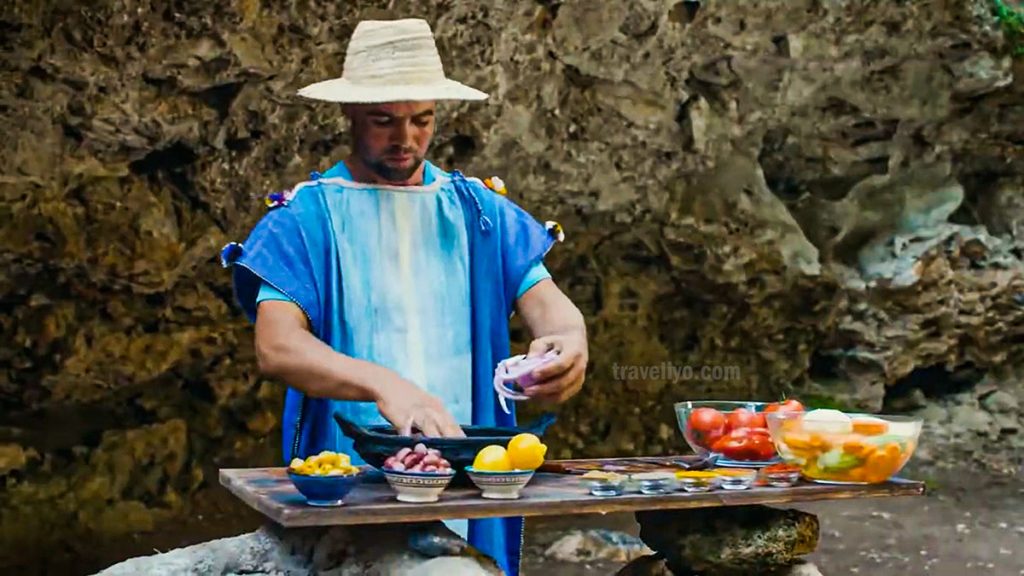
Food in Chefchaouen was an unexpected love story for me. I still dream about the Tagine with prunes and almonds we shared at Casa Aladdin, overlooking the blue rooftops. I never expected slow-cooked lamb to taste this tender — it melted in my mouth, rich with cinnamon and a hint of sweetness.
Tania, of course, fell in love with couscous Fridays — fluffy grains piled high with vegetables and chickpeas. And that glass of freshly squeezed orange juice in the main square? Pure sunshine in a cup.
One funny thing — remember that tiny café where I tried “Moroccan coffee” thinking it’d be mild? I didn’t sleep for almost 24 hours! Strong, sweet, and somehow addictive.
For anyone visiting, try:
Restaurant Bab Ssour – budget-friendly local meals.
Lala Mesouda – home-style food with love in every bite.
And don’t skip mint tea — it’s not just a drink in the Blue City in Morocco, it’s part of life.
09 💰 My Travel Costs & Budget Notes
Chefchaouen turned out to be one of the most affordable trips Tania and I have ever taken — and still one of the most beautiful. Here’s roughly what we spent (for two people):
Accommodation: $60 per night at Casa Perleta (including breakfast).
Meals: Around $10–$15 per person for a decent restaurant meal.
Transport: $8 each for the CTM bus from Tangier.
Attractions: Most are free — just wandering around the medina is the real attraction of the Blue City Morocco.
Daily average cost for two: around $90–$100 USD.
Biggest surprise? How cheap and high-quality the local crafts were. We bought handwoven scarves and pottery for under $10 each — and I still regret not buying that blue ceramic lamp Tania liked.
If you’re planning a similar trip, I’d recommend budgeting about $600–$700 for 5–6 days in Chefchaouen, including transport, meals, and a few souvenirs.
And a tip from experience — always carry small cash. Some cafés don’t accept cards, and bargaining works best with dirhams in hand.
10 📝 Traveliyo Insider Tips
After spending a few dreamy days in Chefchaouen, I picked up a few lessons worth sharing. First — don’t rely too much on Google Maps. The medina’s narrow alleys twist and turn like a blue labyrinth, and GPS loses its mind there. Instead, trust your instincts (or the friendly locals who’ll gladly guide you for a smile).
Second, bring comfortable shoes. Those stone steps look cute in photos, but your legs will remember every climb! Also, mornings are the best time for photos — before the crowds arrive and the light hits the blue walls perfectly.
A mistake I made? Not carrying enough small cash. Many cafés and craft shops don’t accept cards. Another rookie move — I forgot sunscreen thinking the mountain air would protect me. Spoiler: it didn’t.
Pro tip: stay two nights minimum. One day to wander without a plan, another to explore the viewpoints and local culture slowly. The Blue City Morocco isn’t a place to rush — it’s a place to breathe.
11 🗺️ Suggested Itineraries

3 Days in Chefchaouen – Our Personal Schedule
Day 1: Arrival by bus from Tangier. Evening stroll through the medina, dinner at Casa Aladdin.
Day 2: Early hike to the Spanish Mosque for sunrise, breakfast on the terrace, shopping for handmade crafts in the souk, lunch at Bab Ssour, and sunset tea at Café Clock.
Day 3: Visit the Ethnographic Museum, take photos at Ras El Maa waterfall, and a relaxing lunch before heading back. If you have 4–5 days, add a day trip to the Akchour Waterfalls — it’s nature’s masterpiece hidden in the Rif Mountains and an excellent way to see the nature surrounding the Blue City in Morocco
12 ⭐ Traveliyo Recommendation (Curated)
Based on my visit — and our overall Traveliyo experience — Chefchaouen is one of the most peaceful and photogenic towns in all of Morocco. For first-time visitors, Tania and I recommend staying at least 3 days, ideally in spring or autumn, to enjoy the mild weather and avoid the crowds.
Book a stay at a riad within the medina (like Casa Perleta or Dar Echchaouen), explore the Spanish Mosque at sunrise, and take time to connect with locals — that’s where the real charm lies. Chefchaouen Morocco isn’t just a destination; it’s a feeling — slow mornings, blue walls, mint tea, and mountain air that calms your soul.
13 👋 Conclusion + Call to Action (CTA)
As I sat on the terrace of our riad on the final evening, watching the sun melt behind the Rif Mountains, I couldn’t help but feel that the Blue City of Morocco had quietly changed something inside me. The pace of life there is gentle — unhurried — and every shade of blue seems to whisper calm into your heart.
If you ever get the chance to visit Chefchaouen, don’t miss it. Walk its twisting alleys. Talk to the locals. Get lost, find yourself again, and let the silence of the mountains wrap around you.
For me, this wasn’t just another destination — it was a reminder that peace can be found in the simplest places. And yes, I know Tania and I will return someday, hand in hand, to that same blue doorstep where we shared mint tea and laughter.
Planning your own Moroccan escape?
👉 Browse our Traveliyo Morocco Guides for routes, stays, and travel hacks.
👉 Book your stay early at one of the best Chefchaouen hotels — the best riads fill up fast!
👉 Share this story if you’ve ever dreamed of walking through the Blue City yourself.
14 ❓ FAQ Section – Chefchaouen Morocco
1️⃣ Why is Chefchaouen blue?
The city’s iconic blue color has several stories. Some say it was painted blue by Jewish refugees in the 15th century to symbolize heaven and spirituality; others say it keeps mosquitoes away. Whatever the reason, the result in the Blue City Morocco is pure magic.
2️⃣ Is Chefchaouen safe for travelers?
Absolutely. During my stay, I walked through the medina even after dark and felt completely safe. Locals are friendly, and the town has a peaceful atmosphere.
3️⃣ How many days should I spend in Chefchaouen?
I stayed for three days, which felt just right — one for exploring the medina, one for viewpoints and museums, and one for relaxing.
4️⃣ How do I get to Chefchaouen?
The city doesn’t have an airport. Most travelers arrive by bus or shared taxi from Tangier, Tetouan, or Fez (which answers the How to get to Chefchaouen question).
5️⃣ What are the best things to do in Chefchaouen?
Explore the medina, hike to the Spanish Mosque, visit Ras El Maa waterfall, and shop for local crafts (the key What to do in Chefchaouen points).
6️⃣ What’s the best time to visit Chefchaouen?
Spring (March–May) and autumn (September–October) offer perfect weather — warm days and cool nights.
7️⃣ Is it expensive to visit the Blue City?
Not really. Budget travelers can manage on $40–60 per day, including meals and accommodation.
8️⃣ What should I wear in Chefchaouen?
Dress modestly, especially within the medina. Light, breathable clothes are best — and don’t forget comfortable walking shoes!
9️⃣ Can I take photos freely in Chefchaouen?
Yes, but always ask before photographing locals. Some may prefer not to be photographed.
🔟 What souvenirs should I buy from Chefchaouen?
Locally made woven blankets, leather bags, ceramics, and hand-painted blue crafts make perfect keepsakes.
15 🎢 Nearby Attractions & Day Trips from Chefchaouen
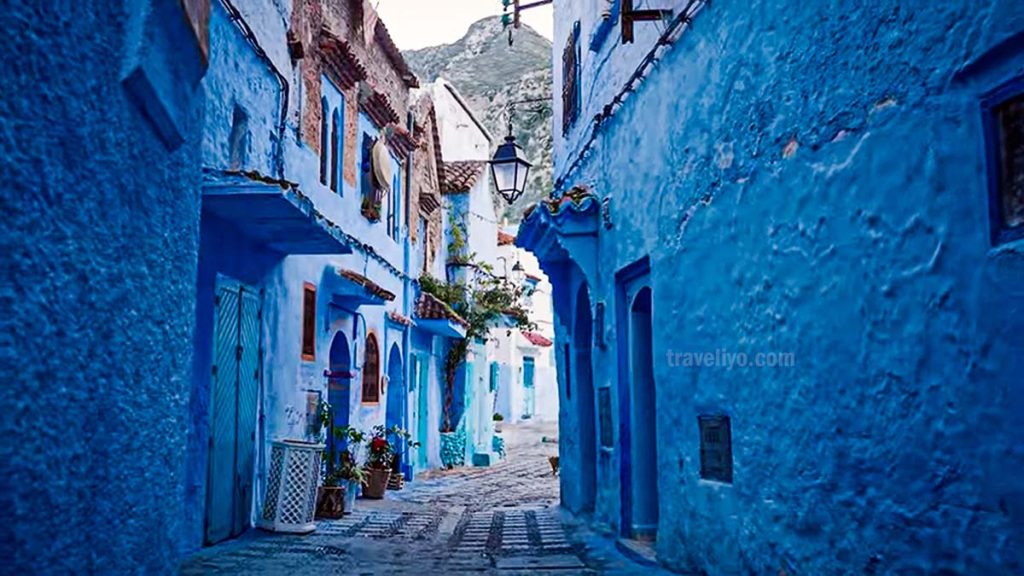
While the Blue City Morocco itself feels like a magical bubble, the region surrounding Chefchaouen is full of equally enchanting spots worth exploring. During our trip, Tania and I made time for a few day trips, and each left us with unforgettable memories — plus a few funny mishaps along the way.
✨ Akchour Waterfalls
About 45 minutes by car from Chefchaouen, the Akchour Waterfalls are a true natural wonder. The hike there is moderately challenging — slippery rocks, steep paths, and the occasional goat crossing! I remember slipping slightly on the wet stones and Tania teasing me, “Classic Lakshitha move!” But reaching the waterfall, feeling the mist on our faces, and watching the turquoise water plunge into a clear pool made every misstep worthwhile. If you’re planning a hike here, be sure to read our detailed guide to the Akchour Waterfalls trail and preparation tips. [Link to Akchour Guide] Bring sturdy shoes, water, and a small snack; the trail can take 2–3 hours round-trip.
🏰 Tetouan
Roughly 2 hours away, Tetouan is a UNESCO World Heritage city known for its Andalusian architecture. Tania and I spent a few hours wandering the white-washed streets, browsing artisan shops, and sipping mint tea in quiet squares. Compared to Chefchaouen, Tetouan felt more urban yet retained an old-world charm that travelers love. If you’re interested in exploring Morocco’s Spanish heritage further, check out our comprehensive guide to Tetouan’s historic medina. [Link to Tetouan Guide]
🌄 Talassemtane National Park
This mountain park surrounds Chefchaouen and is perfect for short hikes or photography trips. We drove about 30 minutes from town and discovered lush forests, rocky peaks, and panoramic views of the Rif Mountains. Talassemtane National Park is an excellent contrast to the intense blue of the city. Tip: check the weather; mist and clouds can make the trails slippery, but the fog-draped Blue City in Morocco in the distance is a dream for photographers. Read the complete travel guide 👉
🕌 Fez (Optional Extended Trip)
For travelers with more time, Fez is about 4 hours away and offers an incredible dive into Moroccan culture. The medina, tanneries, and historic sites make it an ideal overnight or 2-day trip. We didn’t make it this time, but it’s definitely on our list for next return. To help you plan that extended trip, see our recommended itinerary for spending two days in Fez. [Link to Fez Guide] Exploring these nearby attractions made our Chefchaouen Morocco trip richer — a balance of mountain hikes, historical towns, and cultural immersion. If you have the chance, don’t just linger in the blue alleys; the Rif region surrounding it has stories and landscapes that will stay with you forever
For more historical background, You can read the detailed article on Wikipedia
Did this guide help you? Have you also visited Chefchaouen Morocco? Share your experience in the comments below – it will be very valuable for other travelers.



